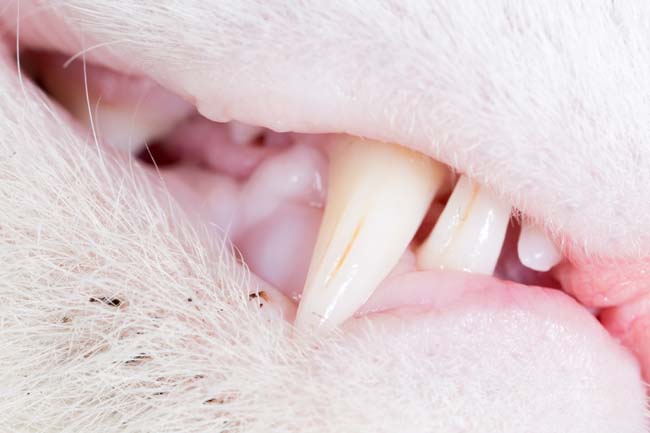Teeth are a vital part of your cat’s anatomy, providing your cat with an effective method of quickly dispatching their prey. It is only fairly recently that cat owners have begun to pay attention to dental care in cats. This is of vital importance because not only does poor dental hygiene affect the teeth, but it has also been proven that it can affect other organs of the body also. This article will guide you through all aspects of feline teeth from teething in kittens to dental care and diseases of the teeth.
Do kittens lose their baby teeth?
Just like humans, cats have two sets of teeth. Kitten (deciduous) teeth and adult (permanent) teeth. Kitten’s teeth begin to fall out around three months of age.
What age does a kitten begin teething?
Baby teeth:
- 2 weeks: Deciduous incisors (the small teeth at the front) begin to come in.
- 3 – 4 weeks: Deciduous canines (the long, pointy teeth next to the front teeth) begin to come in.
- 4 – 6 weeks: Deciduous pre-molars (also known as bicuspids, these are the teeth located between the canine and molar teeth) begin to come in.
- 8 weeks: All baby teeth have come in.
Adult teeth:
- 12 – 16 weeks: Incisors come in.
- 4 – 6 months: Canines, premolars, and molars come in.
- 7 months: All adult teeth should be fully developed.
How many teeth does a cat have?
Kittens have 26 teeth, adult cats have 30.
My kitten has two teeth in one spot:
From time to time, the adult tooth will emerge before the baby tooth has fallen out. This is known as shark or retained teeth and is quite common. If you notice that your cat has two teeth in one spot you should take him to the veterinarian who will be able to extract the baby tooth.
Cat tooth diseases:
Several diseases can affect cat teeth, including:
- Gingivitis – Inflammation of the gums
- Endodontic disease – Inflammation of the dental pulp
- Periodontal disease – Caused by a build-up of plaque on the teeth, pockets form between gums and teeth and there is bone loss
- Feline odontic resorptive lesions
- Tooth abscess
- Stomatitis
How to care for your cat’s teeth:
- Regularly give your cat either raw chicken necks or wings, chunky pieces of raw beef which the cat really has to gnaw on.
- Regularly clean your cat’s teeth. You will need to purchase a special cat toothpaste from your vet. Never use human toothpaste on cats. It is a good idea to start cleaning your cat’s teeth from as early an age as possible.
- Regularly check your cat’s teeth for signs of disease such as red and inflamed gums, bad breath, tartar on the teeth, missing teeth etc. If you notice anything, seek veterinary attention immediately.

